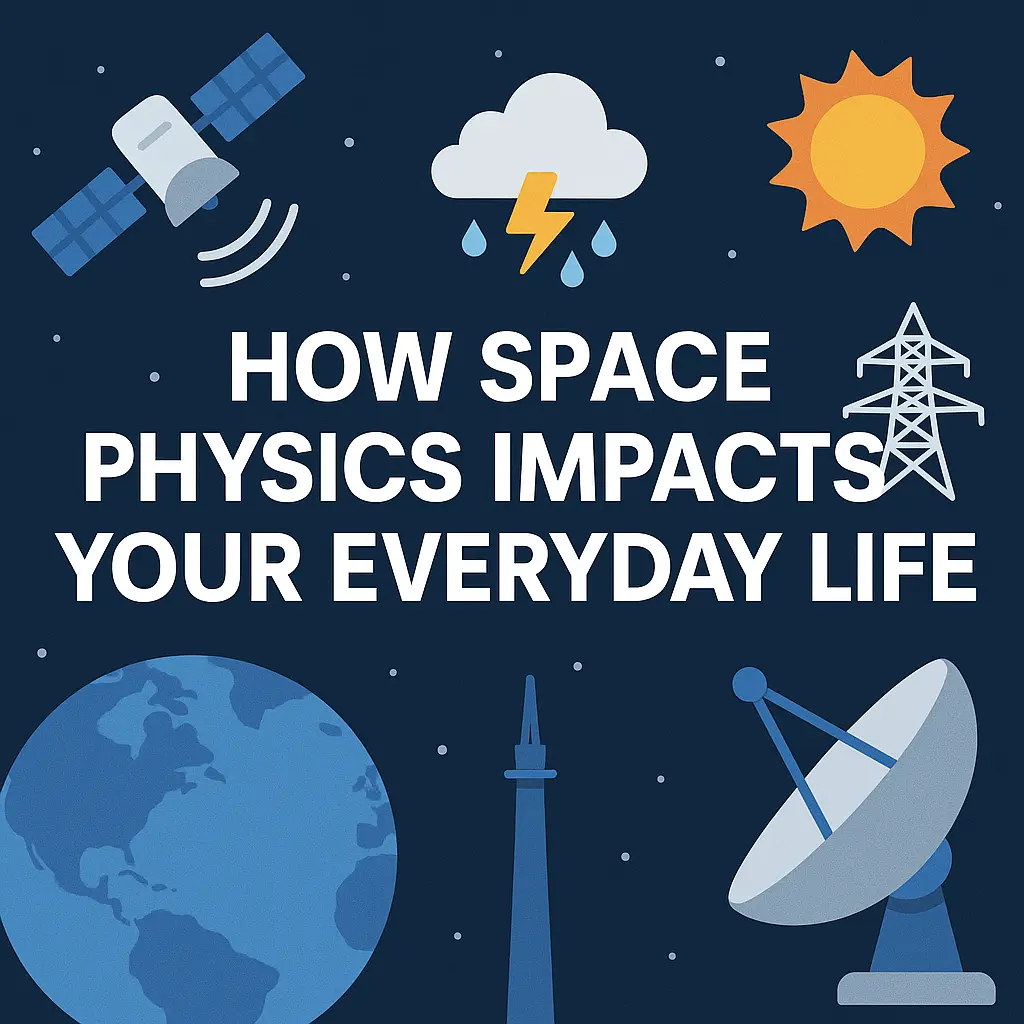When most people hear the term space physics, they might picture astronauts, black holes, or distant galaxies. But in reality, space physics plays a critical role in everyday life — from keeping your phone’s GPS accurate to helping predict dangerous solar storms. The study of the space environment — including plasma, radiation, and magnetic fields — enables us to make Earth a safer, more connected place.
🌦️ 1. Accurate Weather Forecasting
One of the most tangible applications of space physics is in weather monitoring and forecasting. Observations from orbit help meteorologists analyze cloud movements, temperature shifts, and atmospheric changes.
Leading the innovation in this space is Tomorrow.io, a weather intelligence company using proprietary satellite data and AI to provide hyper-local, real-time weather forecasts. Their satellite constellation helps industries like aviation, logistics, and agriculture prepare for weather disruptions with unprecedented accuracy.
⚡ 2. Power Grid Protection from Solar Storms
Geomagnetic storms — triggered by solar flares and coronal mass ejections — can disrupt power grids, satellites, and communication systems. These space weather events generate geomagnetically induced currents that damage transformers and cause blackouts.
Using insights from space physics, satellites like NASA’s Solar Dynamics Observatory and NOAA’s DSCOVR provide real-time monitoring of solar activity. Utilities and grid operators use this data to protect infrastructure, especially during solar maximum periods.
📡 3. Reliable GPS and Communications
Whether you’re navigating with your smartphone or piloting an aircraft, you’re depending on GPS signals that travel through the ionosphere, a layer influenced by solar and geomagnetic activity. Space physics helps us model and correct ionospheric interference, which can otherwise lead to positioning errors of several meters.
Without this correction, critical systems like aviation navigation, autonomous vehicles, and precision agriculture could face serious operational issues. Research in ionospheric modeling continues to improve global positioning systems in real time.
🚨 4. Early Warning Systems and Disaster Preparedness
Space physics contributes heavily to disaster early warning systems that track events such as:
- Hurricanes and severe storms
- Tsunamis and earthquakes
- Flooding and drought
- Space weather events (e.g., solar flares, radio blackouts)
Satellites operated by agencies like NASA Earth Science and ESA Copernicus observe Earth’s atmosphere and surface for signs of imminent threats. Companies like Tomorrow.io integrate space-based data into AI-powered risk assessment tools for cities, governments, and enterprises, turning early warning into early action.
🛰️ 5. Advancements in Technology and Materials
Space physics research drives technological innovation by addressing the harsh demands of space: radiation, plasma, and temperature extremes. This results in breakthroughs such as:
- Radiation-hardened electronics used in medical devices and aviation
- Thermal insulation materials now found in homes and apparel
- Miniaturized sensors and power-efficient systems fueling IoT and consumer tech
These technologies often begin as solutions for spacecraft but are quickly repurposed for real-world applications — a process NASA refers to as “spinoffs.”
🌌 6. Safer Space Travel
As we prepare for missions to the Moon, Mars, and beyond, space physics ensures that space travel remains safe and efficient. Radiation exposure, spacecraft electronics failures, and navigation issues all relate to the space environment.
Understanding these forces allows agencies like NASA and ESA to build shielded spacecraft, accurate trajectory models, and reliable communications systems that can survive the hazards of deep space.
🧠 Conclusion: From the Cosmos to the Sidewalk
Space physics may seem distant, but its impact is immediate. Whether it’s keeping your smartphone GPS accurate, helping utilities avoid blackouts, or powering the weather app on your phone, it’s clear that this field plays a central role in modern life.
As companies like Tomorrow.io continue to fuse space data with machine learning, and as agencies expand their space weather forecasting capabilities, the role of space physics will only grow — shaping a more resilient, responsive, and technologically advanced world.




It’s the best time to make some plans for the future and it is time to be happy. I have read this post and if I could I want to suggest you some interesting things or advice. Perhaps you could write next articles referring to this article. I desire to read more things about it!
Greetings from California! I’m bored to death at work so I decided to check out your website on my iphone during lunch break. I enjoy the knowledge you present here and can’t wait to take a look when I get home. I’m surprised at how quick your blog loaded on my mobile .. I’m not even using WIFI, just 3G .. Anyways, excellent site!
Thank you so much!